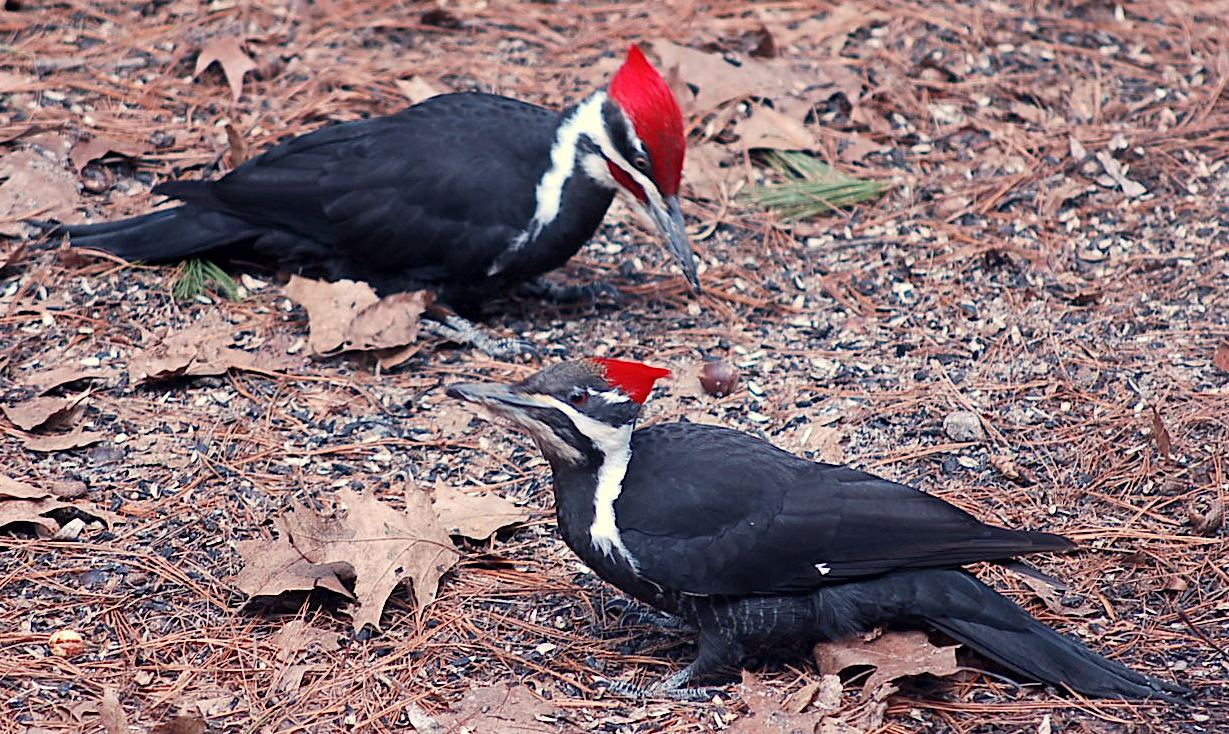Observing Woodpeckers in Florida: Types Variety and Distribution
Observing Woodpeckers in Florida: Types Variety and Distribution
Blog Article
Unveiling the Tricks of Woodpeckers: Actions, Habitat, and A Lot More
Woodpeckers, with their distinct actions and specialized adjustments, have lengthy attracted researchers and nature fanatics alike. These amazing birds have a variety of interesting tricks that lost light on their survival strategies, habitat choices, and detailed communication techniques. By revealing the mysteries surrounding woodpeckers' habits and environment selections, a deeper understanding of these avian wonders emerges, using a glance into their fascinating world. What makes these birds absolutely exceptional, and how do they navigate their environment with such precision and skill? Let's check out the fascinating realm of woodpeckers and unwind the enigmatic details that make them such appealing topics of research study.
Woodpecker Actions Insights
In analyzing woodpecker actions, an interesting display of specialized abilities and adaptations arises, losing light on their impressive environmental niche. Woodpeckers, recognized for their distinctive drumming on trees, have a variety of behavior characteristics that add to their survival and success in their environment.
In addition, woodpeckers display an unique feeding behavior identified by their ability to essence insects from tree bark using their specialized beaks. Their lengthy, barbed tongues aid in recording prey, while their strong neck muscular tissues offer security and precision during pecking motions. This feeding method allows woodpeckers to gain access to surprise insect larvae and extract them with exceptional efficiency.
Habitat Preferences and Option
What factors influence the environment choices and selection of woodpeckers? Woodpeckers are very adaptable birds recognized to inhabit different settings worldwide. However, they do display choices for sure habitat qualities. One important variable affecting woodpecker environment selection is the accessibility of appropriate nesting websites. Woodpeckers commonly prefer forests with a mix of mature trees that offer ample opportunities for tooth cavity excavation. These tooth cavities work as critical nesting and roosting websites for woodpeckers and are essential for their breeding success.
Furthermore, woodpeckers show a choice for environments with a bountiful supply of food resources. They are mostly insectivorous, feeding upon beetles, ants, larvae, and other insects located in worn out timber or tree bark. Woodpeckers have a tendency to prefer wooded locations with a varied insect populace to fulfill their nutritional requirements.
Additionally, the presence of dead or decaying trees is another key variable in woodpecker environment choice. These trees not just supply food resources however also use ideal substratum for dental caries excavation. Dead trees are vital for the maintenance of healthy woodpecker populations, as they play an essential duty in the woodpeckers' life process and environment characteristics.
Feeding Routines and Diet Plan Structure
Woodpeckers show a specialized feeding actions focused on foraging for pests within different habitats. Their diet primarily includes insects such as beetles, ants, caterpillars, and spiders, which they situate by touching on tree bark and listening for the audio of activity inside. Woodpeckers utilize their strong beaks to drill into the wood and their lengthy, barbed tongues to extract target from holes. Along with bugs, woodpeckers also consume tree sap, fruits, nuts, and seeds, including selection to their diet plan read review depending upon the season and accessibility of food sources.
The foraging methods of woodpeckers are well-adapted to their arboreal way of life (Woodpeckers in Florida). Their capacity to excavate timber not only supplies them with food however likewise helps in producing nesting tooth cavities and developing regions. Woodpeckers play an essential role in maintaining the health and wellness of forests by managing insect populations and helping in the decay of wood. Understanding their feeding routines and diet regimen make-up is crucial for preservation initiatives intended at maintaining these special and useful birds.
Drumming Sounds and Interaction
Making use of fast drumming sounds on different surface areas, woodpeckers utilize a distinctive kind of interaction to signify territory limits and attract friends. This drumming habits is not only a means of interaction however also works as a method for woodpeckers to establish their visibility within a specific area. The strength, speed, and pattern of click here now the drumming can convey vital info to other woodpeckers in the location.
Woodpeckers utilize drumming sounds to introduce their presence in a region and to alert off potential burglars. The loud and recurring nature of the drumming works as a clear signal to various other woodpeckers that the area is currently claimed. This aids in decreasing problems and reducing physical confrontations in between people.

Survival Adaptations and Specialized Anatomy

Conclusion
Finally, woodpeckers show one-of-a-kind actions, such as drumming noises for communication, and have specialized anatomy for survival in their picked environments. Their feeding habits and diet regimen make-up even more demonstrate their adaptability to numerous settings. By comprehending these elements of woodpeckers, researchers and preservationists can much better safeguard and preserve these remarkable birds and their ecological communities.
Report this page